Title search results
Showing 1 - 20 of 184 items

The Eagle Mother (Mothers of Xsan)
By Hetxw’ms Gyetxw Huson. 2020
Return to the valleys of the River of Mists with author Hetxw'ms Gyetxw (Brett D. Huson) and his award-winning, richly…
illustrative Mothers of Xsan series. &“An incredible celebration of the deep connections that are essential to the relationships between mothers and their children&”—The Globe and MailNox xsgyaak, the eagle mother, cares for her brood in the embrace of a black cottonwood with the help of her mate. Will both eaglets survive the summer in an environment that is both delicate and unforgiving?Learn about the life cycle of these stunning birds of prey, the traditions of the Gitxsan, and how bald eagles can enrich their entire ecosystem. Evocative illustration brings the Xsan's flora and fauna to life for middle years readers in book three of the Mothers of Xsan series.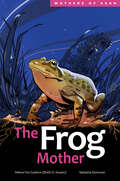
The Frog Mother (Mothers of Xsan)
By Hetxw’ms Gyetxw Huson. 2021
To the Gitxsan of Northwestern British Columbia, Nox Ga&’naaw is a storyteller, speaking truths of the universe. After Nox Ga&’naaw,…
the frog mother, releases her eggs among the aquatic plants of a pond, the tiny tadpoles are left to fend for themselves. As they hatch, grow legs, and transform into their adult selves, they must avoid the mouths of hungry predators. Will the young frogs survive to spawn their own eggs, continuing a cycle 200 million years in the making?Book four of the Mothers of Xsan series follows the life cycle of the columbia spotted frog. Learn about why this species is of special significance to the Gitxsan and how Nox Ga'naaw and her offspring are essential to the balance that is life.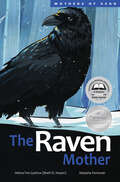
The Raven Mother (Mothers of Xsan)
By Hetxw’ms Gyetxw Huson. 2022
★ Starred selection for CCBC's Best Books for Kids & Teens 2023! Hoarders. Scavengers. Clever foragers. Bringers of new life.…
Ravens have many roles, both for the land and in Gitxsan story and song. The sixth book in Hetxw'ms Gyetxw (Brett D. Huson)&’s Mothers of Xsan series transports young readers to Northwestern British Columbia, where they will learn about the traditions of the Gitxsan, the lives of ravens, and why these acrobatic flyers are so important to their ecosystem. Follow along as Nox Gaak, the raven mother, teaches her chicks what they need to survive with the help of her flock.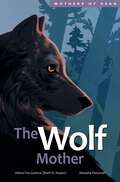
The Wolf Mother (Mothers of Xsan #5)
By Hetxw’ms Gyetxw Huson. 2021
Follow along as award-winning author Hetxw&’ms Gyetxw (Brett D. Huson) introduces young readers to a pack of grey wolves. New…
pups have just begun to open their eyes, one of which is a striking black female. Every day, her ears grow larger, her eyesight gets sharper, and her legs stretch farther. As she learns to hunt, play, and run with her pack, instinct pulls her to explore beyond her home territory. Will the young wolf&’s bold spirit help her find a new pack of her very own?Learn about the life cycle of these magnificent canines, the traditions of the Gitxsan, and how grey wolves contribute to the health of their entire ecosystem.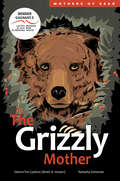
The Grizzly Mother (Mothers of Xsan)
By Hetxw’ms Gyetxw Huson. 2019
Book two in the award-winning Mothers of Xsan series, The Grizzly Mother uses striking illustration and lyrical language to bring…
the poetry of the Xsan ecosystem to life.To the Gitxsan people of Northwestern British Columbia, the grizzly is an integral part of the natural landscape. Together, they share the land and forests that the Skeena River runs through, as well as the sockeye salmon within it. Follow mother bear as she teaches her cubs what they need to survive on their own.
The Eagle Mother (Mothers of Xsan)
By Hetxw’ms Gyetxw Huson. 2020
Return to the valleys of the River of Mists with author Hetxw'ms Gyetxw (Brett D. Huson) and his award-winning, richly…
illustrative Mothers of Xsan series. &“An incredible celebration of the deep connections that are essential to the relationships between mothers and their children&”—The Globe and MailNox xsgyaak, the eagle mother, cares for her brood in the embrace of a black cottonwood with the help of her mate. Will both eaglets survive the summer in an environment that is both delicate and unforgiving?Learn about the life cycle of these stunning birds of prey, the traditions of the Gitxsan, and how bald eagles can enrich their entire ecosystem. Evocative illustration brings the Xsan's flora and fauna to life for middle years readers in book three of the Mothers of Xsan series.
The Frog Mother (Mothers of Xsan)
By Hetxw’ms Gyetxw Huson. 2021
To the Gitxsan of Northwestern British Columbia, Nox Ga&’naaw is a storyteller, speaking truths of the universe. After Nox Ga&’naaw,…
the frog mother, releases her eggs among the aquatic plants of a pond, the tiny tadpoles are left to fend for themselves. As they hatch, grow legs, and transform into their adult selves, they must avoid the mouths of hungry predators. Will the young frogs survive to spawn their own eggs, continuing a cycle 200 million years in the making?Book four of the Mothers of Xsan series follows the life cycle of the columbia spotted frog. Learn about why this species is of special significance to the Gitxsan and how Nox Ga'naaw and her offspring are essential to the balance that is life.
The Raven Mother (Mothers of Xsan)
By Hetxw’ms Gyetxw Huson. 2022
★ Starred selection for CCBC's Best Books for Kids & Teens 2023! Hoarders. Scavengers. Clever foragers. Bringers of new life.…
Ravens have many roles, both for the land and in Gitxsan story and song. The sixth book in Hetxw'ms Gyetxw (Brett D. Huson)&’s Mothers of Xsan series transports young readers to Northwestern British Columbia, where they will learn about the traditions of the Gitxsan, the lives of ravens, and why these acrobatic flyers are so important to their ecosystem. Follow along as Nox Gaak, the raven mother, teaches her chicks what they need to survive with the help of her flock.
The Wolf Mother (Mothers of Xsan #5)
By Hetxw’ms Gyetxw Huson. 2021
Follow along as award-winning author Hetxw&’ms Gyetxw (Brett D. Huson) introduces young readers to a pack of grey wolves. New…
pups have just begun to open their eyes, one of which is a striking black female. Every day, her ears grow larger, her eyesight gets sharper, and her legs stretch farther. As she learns to hunt, play, and run with her pack, instinct pulls her to explore beyond her home territory. Will the young wolf&’s bold spirit help her find a new pack of her very own?Learn about the life cycle of these magnificent canines, the traditions of the Gitxsan, and how grey wolves contribute to the health of their entire ecosystem.
The Grizzly Mother (Mothers of Xsan)
By Hetxw’ms Gyetxw Huson. 2019
Book two in the award-winning Mothers of Xsan series, The Grizzly Mother uses striking illustration and lyrical language to bring…
the poetry of the Xsan ecosystem to life.To the Gitxsan people of Northwestern British Columbia, the grizzly is an integral part of the natural landscape. Together, they share the land and forests that the Skeena River runs through, as well as the sockeye salmon within it. Follow mother bear as she teaches her cubs what they need to survive on their own.
Muinji'j Asks Why: The Story of the Mi'kmaq and the Shubenacadie Residential School
By Shanika MacEachern, Breighlynn MacEachern. 2022
An educational and heartfelt retelling of the story of the Mi'kmaq and their traditional lands, Mi'kma'ki, for young readers, focused…
on the generational traumas of the Indian Residential School System."The story of the Mi'kmaw people is one that very few truly know, Ladybug. Even fewer understand what happened at the residential schools. It is a hard story to tell, but you must know the truth. Sit and I will tell you the story."When seven-year-old Muinji'j comes home from school one day, her Nana and Papa can tell right away that she's upset. Her teacher has been speaking about the residential schools. Unlike most of her fellow students, Muinji'j has always known about the residential schools. But what she doesn't understand is why the schools existed and why children would have died there. Nana and Papa take Muinji'j aside and tell her the whole story, from the beginning. They help her understand all of the decisions that were made for the Mi'kmaq, not with the Mi'kmaq, and how those decisions hurt her people. They tell her the story of her people before their traditional ways were made illegal, before they were separated and sent to reservations, before their words, their beliefs, and eventually, their children, were taken from them. A poignant, honest, and necessary book featuring brilliant artwork from Mi'kmaw artist Zeta Paul and words inspired by Muinji'j MacEachern's true story, Muinji'j Asks Why will inspire conversation, understanding, and allyship for readers of all ages.
Every Child Matters
By Phyllis Webstad, Karlene Harvey. 2023
Learn the meaning behind the phrase, 'Every Child Matters.' Orange Shirt Day founder, Phyllis Webstad, offers insights into this heartfelt…
movement. Every Child Matters honours the history and resiliency of Indigenous Peoples on Turtle Island and moves us all forward on a path toward Truth and Reconciliation. If you're a Residential School Survivor or an Intergenerational Survivor - you matter. For the children who didn't make it home - you matter. The child inside every one of us matters. Every Child Matters.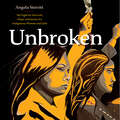
Unbroken: My Fight for Survival, Hope, and Justice for Indigenous Women and Girls
By Angela Sterritt. 2023
"A remarkable life story.... Angela Sterritt is a formidable storyteller and a passionate advocate." (Cherie Dimaline, author of The Marrow…
Thieves) "Sterritt's story is living proof of how courageous Indigenous women are." (Tanya Talaga, author of Seven Fallen Feathers and All Our Relations) In her memoir, Angela Sterritt shares her story from navigating life on the streets to becoming an award-winning journalist. As a teenager, she wrote in her notebook to survive. Now, she reports on cases of missing and murdered Indigenous women in Canada, showing how colonialism and racism create a society where Indigenous people are devalued. Unbroken is a story about courage and strength against all odds.
Biographie en images : Voici Buffy Sainte-Marie (Biographie en images)
By Elizabeth MacLeod. 2023
See below for English description.Légende de la musique, militante et enseignante! Buffy Sainte-Marie ne sait pas exactement où et quand…
elle est née, mais il est probable qu’elle ait vu le jour à la réserve de Piapot, dans la vallée de la Qu’Appelle, en Saskatchewan. Lorsqu’elle était bébé, elle a été adoptée par une famille blanche aux États-Unis. Mais rien n’aurait pu empêcher Buffy de renouer avec ses racines et de partager avec le monde entier la puissance et la beauté de son héritage. En tant que musicienne, les chansons de Buffy ont inspiré trois générations d’admirateurs, et lui ont valu une reconnaissance internationale et de nombreux prix. Elle milite pour la paix, soutient l’éducation des Autochtones et défend sans relâche leurs droits. Depuis plus de 60 ans, la musique et le message de Buffy demeurent aussi édifiants et importants. Aujourd’hui, le moment est venu de faire découvrir aux jeunes lecteurs cette fascinante pionnière grâce à ce livre captivant.Meet Buffy Sainte-Marie, music legend, activist and teacher! Buffy Sainte-Marie is not exactly sure where or when she was born, but it was likely the Piapot Reserve in the Qu’Appelle Valley, Saskatchewan. As a baby she was adopted out to a white family in the United States. But nothing would stop Buffy from connecting to her roots and sharing the power and the beauty of her heritage with the world. Original title : Scholastic Canada Biography : Meet Buffy Sainte-Marie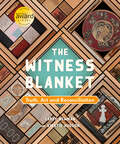
The Witness Blanket: Truth, Art and Reconciliation
By Carey Newman, Kirstie Hudson. 2022
For more than 150 years, thousands of Indigenous children were taken from their families and sent to residential schools across…
Canada. Artist Carey Newman created the Witness Blanket to make sure that history is never forgotten. The Blanket is a living work of art—a collection of hundreds of objects from those schools. It includes everything from photos, bricks, hockey skates, graduation certificates, dolls and piano keys to braids of hair. Behind every piece is a story. And behind every story is a residential school Survivor, including Carey's father. This book is a collection of truths about what happened at those schools, but it's also a beacon of hope and a step on the journey toward reconciliation.
Meet Buffy Sainte-Marie (Scholastic Canada Biography)
By Elizabeth MacLeod. 2023
Meet Buffy Sainte-Marie, music legend, activist and teacher!Buffy Sainte-Marie is not exactly sure where or when she was born, but…
it was likely the Piapot Reserve in the Qu’Appelle Valley, Saskatchewan. As a baby she was adopted out to a white family in the United States. But nothing would stop Buffy from connecting to her roots and sharing the power and the beauty of her heritage with the world.As a musician, Buffy’s songs have inspired three generations of fans, garnering international acclaim and many awards. She’s a peace activist, an advocate for Indigenous-focused education, and a tireless supporter of Indigenous rights.After an incredible career lasting more than 60 years, Buffy’s music and message are as uplifting and important today as they ever were. Now is the right time to introduce young readers to this fascinating change-maker, with this accessible, engaging book.The Scholastic Canada Biography series is an award-winning collection of titles focused on fascinating people who have shaped Canada’s past and present. Written by acclaimed non-fiction author Elizabeth MacLeod, each book also features comics-inspired illustrations by Mike Deas, which appeal to today’s readers and help bring the story to life.
Amazing L'nu'k: A Celebration of the People of Mi'kma'ki (Amazing Atlantic Canadians Series #4)
By Robin Grant, James Bentley, Julie Pellissier-Lush. 2023
The newest installment in the celebrated illustrated series about Amazing Atlantic Canadians, featuring incredible Indigenous people. Delve into the uplifting…
stories of the people of Mi'kma'ki in this full-colour illustrated book. Meet a devoted water protector, learn about a teen determined to shed light on the tragic history of Residential Schools, and discover poets who use words to explore and champion the rich Mi'kmaw culture. From Grand Chief Gabriele Sylliboy and Elder Dorene Bernard to Rebecca Thomas and Landyn Toney, all of these amazing people call Mi'kma'ki (a territory that includes New Brunswick, Prince Edward Island, Nova Scotia, and parts of Newfoundland, Quebec, and Maine) home. With dozens of profiles featuring artists, athletes, entrepreneurs, scientists, and more — both historical and present-day, from kids to Elders — Julie Pellissier-Lush and Robin Grant celebrate the many brilliant achievements of the Mi'kmaq. Includes original colour illustrations by James Bentley, informative sidebars, a map of Mi'kmaw territories, a history of Mi'kma'ki , an index, and a glossary.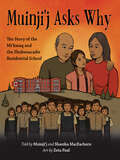
Muinji'j asks why: The story of the mi'kmaq and the shubenacadie residential school
By Shanika Jayde MacEachern. 2022
An educational and heartfelt retelling of the story of the Mi'kmaq and their traditional lands, Mi'kma'ki, for young readers, focused…
on the generational traumas of the Indian Residential School System. "The story of the Mi'kmaw people is one that very few truly know, Ladybug. Even fewer understand what happened at the residential schools. It is a hard story to tell, but you must know the truth. Sit and I will tell you the story." When seven-year-old Muinji'j comes home from school one day, her Nana and Papa can tell right away that she's upset. Her teacher has been speaking about the residential schools. Unlike most of her fellow students, Muinji'j has always known about the residential schools. But what she doesn't understand is why the schools existed and why children would have died there. Nana and Papa take Muinji'j aside and tell her the whole story, from the beginning. They help her understand all of the decisions that were made for the Mi'kmaq, not with the Mi'kmaq, and how those decisions hurt her people. They tell her the story of her people before their traditional ways were made illegal, before they were separated and sent to reservations, before their words, their beliefs, and eventually, their children, were taken from them. A poignant, honest, and necessary book featuring brilliant artwork from Mi'kmaw artist Zeta Paul and words inspired by Muinji'j MacEachern's true story, Muinji'j Asks Why will inspire conversation, understanding, and allyship for readers of all ages
Nutshimit : Un bain de forêt
By Melissa Mollen Dupuis. 2023
See below for English description.Deux grandes créatrices du Québec, Melissa Mollen Dupuis et Elise Gravel, s’unissent pour nous offrir une…
oeuvre marquante, Nutshimit : Un bain de forêt. Partez à l’aventure et découvrez le Nutshimit de Melissa Mollen Dupuis, brillamment illustré par Elise Gravel. Ce documentaire ludique, raconté à la première personne du singulier, s’adresse à tous les amateurs de la nature, petits et grands. Au fil des pages, Melissa nous amène au coeur de la forêt, sa forêt. Elle y décrit le territoire si important pour sa nation et pour toutes les premières nations du Canada. De la légende de la création de la terre à la vie innue d’aujourd’hui, le lecteur découvre le Nutshimit, l’espace physique et social, là où l’on pratique les activités traditionnelles (mordiller de l’écorce de bouleau, allumer un feu, cuire un pashimeu (pâté de bleuets), tresser le foin d’odeur…). En plus d’y trouver tous les éléments si chers à la vie en forêt (animaux, oiseaux, flore, faune, coutumes…) Melissa introduit des mots innus pour nous donner un bain complet de sa culture. On y retrouve aussi des activités chères aux peuples autochtones comme cuire la bannique, faire le sirop d’érable ou boucaner le saumon. Le ton familier et joyeux de Melissa ainsi que les anecdotes tirées de ses expériences font de cet ouvrage un outil indispensable pour connaître la vie en forêt.Elise Gravel has teamed up with Innu author Melissa Mollen Dupuis to bring us Nutshimit : In the Woods. The Innu word Nutshimit signifies the physical and social space to practice traditional activities and language. In this first-person account, Melissa and Elise take us on a journey through the culture, from creation legends to Innu life today. Melissa also takes us through a forest bath. “A what?” you may ask. You’ll just have to read the book and see! Along the way, readers will learn Innu nature vocabulary (did you know that kakacshu is the Innu word for crow?). And of course, this being an Elise-illustrated book, the pages are populated with hilarious characters and plenty of fun details. Melissa’s colloquial and open tone and anecdotes from her lived experiences make the book extra personal. English title: Nutshimit: In the Woods
The Secret Pocket
By Peggy Janicki, Carrielynn Victor. 2023